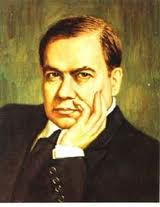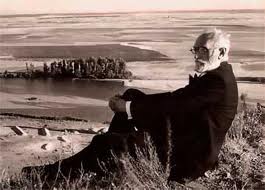Modernism overview

Modernism arose in Europe and America during the last years of the 19th century. The incipient movements of the end of the century wanted to change the social and political situation, as well as the artistic tendencies of the period (Realism and Naturalism). At the beginning, the term "modernist" was used in a pejorative way by those who didn't want any changes, but as time went on it became the name of those who developed this movement. The main author of the Modernist movement in the Spanish language is the Nicaraguan poet Ruben Dario.
Spanish Modernist Literature
Modernism was a way of rebelling against the prevailing literature of the period. Modernists innovated to find different topics and literary forms that were closer to their ideals and concerns. The origin of this break between Realism and Modernist literature has its origin in the spiritual crisis present during the last years of the 19th century. There are two French literary movements that influence Modernism:
- Parnassianism: the name comes from the magazine were the term first appeared, called "Le Parnasse Contemporain". This publication considers art is important for art's sake, not for the feelings or emotions behind it. The followers of this movement aim to create "beautiful things" by writing about exotic topics and using a musical language to decorate them. The creator of Parnassianism is Leconte de Lisle.
- Symbolism: contrary to Parnassianism, Symbolism does have a transcendental ambition. Baudelaire is considered the main figure in this movement. He argues that the whole universe, all earthly and spiritual things, form a harmonious ensemble. Everything is connected through invisible strings, and the writer is the one who should reveal them. Metaphors and comparisons are frequently used to explain the connections between everything.

Independent and nationalist feelings were quite common in Latin America during the period, since they had only just obtained their independence from the Spanish Empire. The memories of the Spanish oppression made them reject any movement coming from Spain, so most of their influence comes from the European, especially French, Modernist writers. However, this changed after the Latin American writers visited Spain and they found there were literates there who were also sensible to the necessary aesthetic and social changes. Spain did receive a strong influence from the Latin American writers from the beginning of the Modernist literature movement, although they were also influenced by the French Parnasian and Symbolist writers.

The common topics of the Modernist literature are:
- Sensory beauty and flight from the world: Modernists want to escape their world and take refuge in a perfect, utopian world, where everything is beautiful and expressive. They want to escape from their day-to-day and routine. They feel predilection towards the Middle Ages, the classic world and the Renaissance, as well as for the France of the 17th and 18th centuries and other far away and exotic places. Settings are usually genteel and the characters tend to be princesses, mythological and literary heroes, knights... Swans and the color blue are important for Modernists, the first because they remind him of aristocrats (in opposition to the bourgeoisie), and the latter because it symbolizes freedom. The tendency of evading from reality is a reminder of Romanticism.
- The writer's inner world: Modernists oppose Realism, which is centered around the observation of the outside world, while Modernism revolves more around the feelings and emotions of the writers, which are sometimes reflected in landscapes. They also talk about sensuality and the idealization of love and women.
The style of the Modernist literature is a very characteristic one. Modernists choose their words very carefully to produce colorful and musical effects. The use of phonic resources like onomatopoeias and alliterations is quite common, as well as figures of speech like metaphors, allegories, parallels and synesthesia. Adjectives and exotic, foreign or peculiar sounding words are also used often, and they recover some types of verses used in the past, like the alexandrine verses. Old stanzas are brought back and new ones are created.
In Spain there's a parallel movement called "Generation of '98", which shares some of the characteristics of Modernist literature, but which is also quite different in some other aspects. When being taught in Spanish Schools, both movement are normally put together into one, but there are differences that have to be acknowledged.

